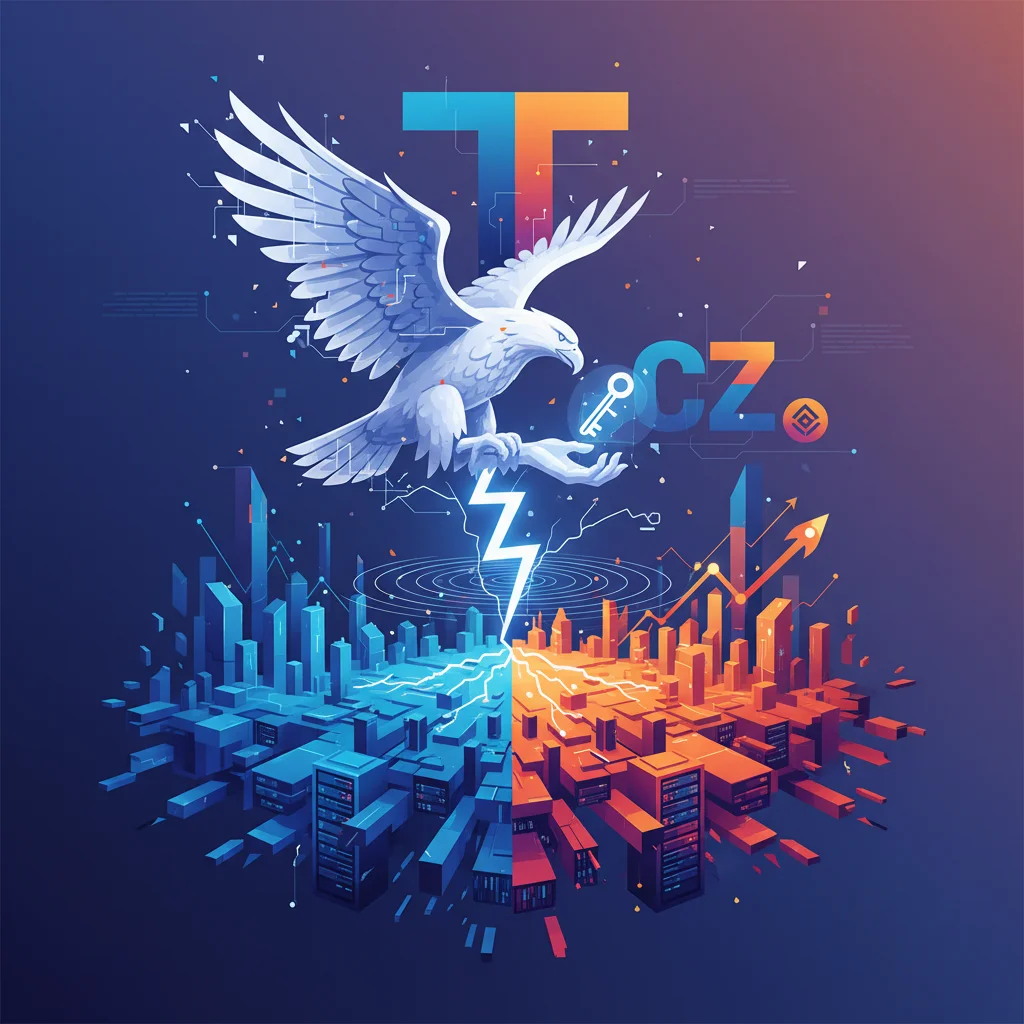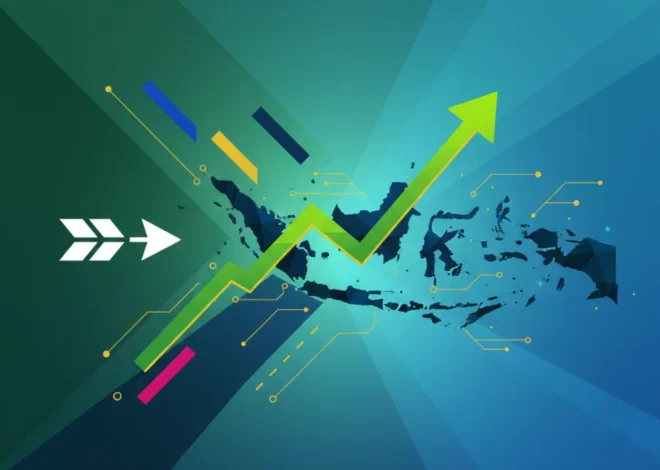
The Pardon That Shook Silicon Valley: What Trump’s Clemency for CZ Means for the Future of Tech
It was a move that sent shockwaves from Wall Street to Silicon Valley. In a stunning and controversial decision, former President Donald Trump has granted a full pardon to Changpeng Zhao, the billionaire founder of the world’s largest cryptocurrency exchange, Binance. The news, first reported by the BBC, comes just months after Zhao, widely known as “CZ,” was sentenced to four months in prison in early 2024 for failing to implement adequate anti-money laundering (AML) protocols.
On the surface, this is a story about crypto, crime, and political power. But dig a little deeper, and you’ll find this pardon is a critical inflection point for the entire technology sector. It’s a narrative that intertwines the future of software, the ethics of artificial intelligence, the challenges of cybersecurity, and the very definition of innovation in the 21st century. For developers, entrepreneurs, and tech professionals, this isn’t just a headline; it’s a harbinger of a new, uncertain landscape.
This pardon wasn’t an isolated act of clemency. It appears to be the flagship announcement of a broader, and as-yet-unclear, “Digital Frontier Initiative” from the Trump camp, aimed at reasserting American dominance in key technological arenas. The message seems to be: we will back our innovators, even the controversial ones, in the global race for technological supremacy. But what does this really mean for those of us building the future?
The Automation Dilemma: Where Code Meets Compliance
At the heart of the case against Binance was a failure of its automated systems. Zhao pleaded guilty to not establishing the kind of robust, anti-money laundering software required to prevent illicit actors from using the platform. His defense argued that in a rapidly scaling startup, technology often outpaces regulation. They were building a global financial engine on the cloud, handling millions of transactions a second—a scale where manual oversight is impossible. The only solution was automation, and their automation, prosecutors argued, was simply not good enough.
This pardon forces a critical conversation for every SaaS company and tech platform: where does the responsibility of the programming end and the liability of the founder begin? For years, the mantra has been to automate everything. We use machine learning algorithms to detect fraud, manage customer relations, and deploy code. But the CZ case highlights the immense risk when that automation fails to comply with complex legal frameworks. The pardon could be interpreted in two ways:
- A signal that the government understands the growing pains of tech startups and is willing to be lenient when innovation outpaces compliance.
- A dangerous precedent that allows powerful founders to sidestep accountability by blaming the complexities of their own software.
This duality is causing significant debate in developer communities and boardrooms alike. The pressure is now on to build not just innovative software, but legally and ethically resilient automated systems from day one. According to a recent report from Gartner, spending on regulatory technology (RegTech) is projected to exceed $200 billion by 2027 (source), a clear indicator that the industry is scrambling to solve this very problem.
Is the AI Boom a High-Tech Cargo Cult?
AI in the Crosshairs: From RegTech to Influence-Tech
The conversation around this pardon extends deep into the world of artificial intelligence. On one hand, the next generation of compliance software will undoubtedly be powered by sophisticated AI. Think predictive machine learning models that can flag suspicious transaction patterns in real-time, far more effectively than the rule-based systems of today. This pardon might ironically be the catalyst that accelerates AI adoption in the fintech and cybersecurity sectors.
However, there’s a more speculative and darker side to the AI story here. Whispers in Washington tech policy circles suggest that the lobbying effort for Zhao’s pardon was itself a masterclass in modern, AI-driven influence. Campaigns are reportedly using advanced AI models to analyze public sentiment, target specific political influencers with hyper-personalized messaging, and model the economic and political impact of policy decisions like this pardon. While unconfirmed, the mere possibility signals a new era where public policy can be swayed by powerful algorithms, a development that should concern everyone in the tech industry.
Comparing Compliance Paradigms: Old vs. New
To understand the technological shift at the heart of this issue, it’s helpful to compare the traditional approach to financial compliance with the emerging AI-powered paradigm that the tech world is racing to build. The following table breaks down the key differences:
| Feature | Traditional Compliance (Rule-Based) | AI-Powered RegTech (ML-Based) |
|---|---|---|
| Methodology | Static, pre-defined rules (e.g., “flag all transactions over $10,000”). | Dynamic, self-learning models that identify anomalous behavior and hidden patterns. |
| Data Analysis | Primarily structured data, often analyzed in batches. | Analyzes vast amounts of structured and unstructured data in real-time. |
| False Positives | High rate of false positives, leading to significant manual review costs. | Dramatically lower false positive rates through contextual understanding. |
| Adaptability | Slow to adapt to new money laundering techniques; requires manual rule updates. | Adapts continuously as it learns from new data and adversary tactics. |
| Core Technology | Basic database queries and legacy software systems. | Machine learning, natural language processing (NLP), and graph analytics on cloud infrastructure. |
This shift is not trivial. It represents a fundamental rewiring of the infrastructure that underpins global finance, moving from a system of “checking boxes” to one of genuine, intelligent oversight. This pardon puts the urgency of this transition into stark relief.
Beyond the Zap: How Taser's Maker is Building a Controversial AI-Powered Future for Policing
A Chilling Effect or a Catalyst for Cybersecurity Innovation?
For the cybersecurity industry, the implications are profound. The core of Binance’s legal trouble was its platform’s vulnerability to exploitation by sanctioned entities and criminal organizations, which is fundamentally a cybersecurity failure. A presidential pardon for such a high-profile case could, some experts fear, create a moral hazard. If the consequences for massive compliance failures at the top are softened, will startups de-prioritize security and compliance budgets in favor of rapid growth? A recent study noted that early-stage startups allocate, on average, less than 5% of their budget to cybersecurity (source), a number that this pardon is unlikely to help increase.
Conversely, a more optimistic take is that this event will serve as a massive wake-up call. The public nature of Binance’s failures, followed by this controversial pardon, has put a spotlight on the critical need for robust, scalable security and compliance solutions. This could trigger a new wave of innovation in the cybersecurity space, particularly for SaaS companies specializing in:
- AI-driven threat intelligence for financial platforms.
- Automated identity verification (KYC) and transaction monitoring.
- Cloud-native security posture management for fintech infrastructure.
- Privacy-enhancing technologies that allow for compliance without compromising user data.
The market for these solutions is now white-hot. Venture capitalists who may have been wary of the staid world of compliance are now seeing it as a critical component of the modern tech stack.
Caught in the Crossfire: Why Europe's Tech Future is Hostage to the US-China Mineral War
The Road Ahead: A New Playbook for Tech and Power
The pardon of Changpeng Zhao is far more than a political maneuver. It’s a complex signal to the entire global technology ecosystem. It challenges our understanding of accountability in an age of automated systems and decentralized platforms. It forces developers and engineers to confront the ethical implications of their programming and the societal impact of the software they build.
For entrepreneurs and startups, it presents a confusing mix of opportunity and risk. The path to innovation may seem less encumbered by regulatory threats, but the reputational and ethical stakes have never been higher. As we move forward, the key will be to harness the immense power of technologies like AI and the cloud not to circumvent rules, but to build a more secure, transparent, and equitable digital world.
This pardon hasn’t closed a chapter; it has ripped open a new one. And its contents will be written not in the halls of power, but in the lines of code, the architecture of our systems, and the ethical frameworks we choose to adopt. The question is, what story will we choose to write?


